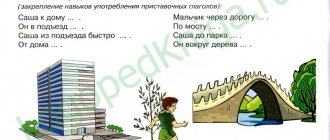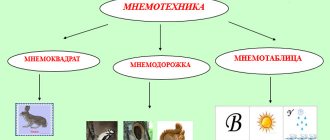- home
- Aircraft
Today there are quite a few different aircraft, but not all of them are called airplanes. This term refers to any aircraft that is designed to fly in the sky due to a power plant that creates thrust and a wing that remains motionless at all times. It is the fixed wing that is the main characteristic of the aircraft, distinguishing it from any other aircraft.
This term itself appeared back in 1857 - then a Russian pilot called a balloon that way; there were no airplanes in the sense in which we use this word today. It was mentioned in a meaning close to its modern one a few years later - in 1863. It was an article “Aeronautics”, published in 1863 in the magazine “Voice”. The author was journalist Arkady Evald.
Today there are a huge number of aircraft classifications. For example, by the number of wings, by the aerodynamic system, by the type of chassis and by speed.
In this text we will look at one of the main typologies. Any aircraft, first of all, are divided by purpose. They are civilian, military and experimental. Each of these categories, in turn, is also divided into several types.
Civil
As is obvious from the name itself, these are aircraft designed to transport passengers or cargo. The first flight on an aircraft of this type took place in Russia more than a hundred years ago - in 1914. The flight was made from St. Petersburg to Kyiv, and the plane was called “Ilya Muromets”. There were 16 passengers on board.
Today, the most famous and frequently used airliner of our time is the American Douglas DC-3 model. He first flew with passengers back in 1935. Over the past time, the aircraft has been improved, and many other models, including those of Soviet aviation, were created on its basis.
Civil aircraft can be transport, training or special purpose. Transport vehicles, in turn, are divided into according to their purpose:
- Freight - for transporting goods;
- Passenger planes are the planes we fly;
There are many varieties of such vehicles. The easiest way is to divide them simply by manufacturer. In fact, the vast majority of the world's aircraft are produced by such companies:
Boeing
This is an American company that appeared a long time ago, in 1916. Since then, it has been producing aircraft for civil aviation. The most popular model is the Boeing 737. It is this aircraft, produced in 1968, that is used most often today. The name “Boeing” itself has already become practically synonymous with the word airplane.
Airbus
This company today is the main competitor of the Boeing described above, although it was founded much later - in 1970. This European company, today its main office is located in France. Some models of this manufacturer are economical, which makes them a serious competitor to Boeing.
Military
Military aircraft are designed to conduct combat operations, that is, protection from the enemy or, conversely, attack. They are divided into several types, but in general, they can perform a variety of tasks, depending on the current situation.
Bombers
This subspecies of military aircraft essentially has one task - to destroy any ground objects from the air. This occurs by dropping bombs or missiles on the target. Today there are many different models, among the most commonly used are the Su-24 and Su-34.
It was the bomber that was converted into the first passenger aircraft, the Ilya Muromets, which was discussed above. During the First World War, the aircraft was re-equipped and subsequently it always served as a bomber.
Fighters
Unlike bombers, such aircraft are used for air combat. The name “fighter” sounds loud and menacing, but in fact such aircraft belong to defense equipment. They are almost never used for offensive purposes. Fighters were actively used by both sides during the Second World War - the most famous models are the MiG-3 and Yak-1.
It is interesting that in the very first models of fighters, it was not a machine gun, as it is today, but a revolver, so the rate of fire was much lower.
Fighter-bombers
Naturally, the two models described above were combined to obtain a universal model that combines the functions of both types. The main advantage of this variety is the ability to bomb any ground targets without any cover at all. Such aircraft are very light, maneuverable and equipped with powerful weapons. The most successful models are Mig-27, Su-17, SEPECAT Jaguar.
Interceptors
In fact, this is not a completely separate class, just a subtype of fighter. The main difference is that interceptors are designed to destroy a specific target, namely enemy bombers. They are also slightly different in structure - such models are additionally equipped with radar equipment. famous models - Su-15, Su-9 and others.
LEXICAL TOPIC "TRANSPORT".
https://www.liveinternet.ru/users/4619293/post211996360/
CHILDREN SHOULD KNOW OBJECTS: car, transport, bus, metro, tram, trolleybus, train, plane, ship, helicopter, boat, truck, driver, pilot, captain, traffic rules, garage, parking, stop, sidewalk, rails, road , rocket, controller, conductor, station, airport, port, pier, airfield, wheel, steering wheel, door, glass, headlights, hood, trunk, pump, driver, boat, ticket, rails, sleepers, rocket, train, dump truck, taxi , cart, bicycle, motorcycle, tractor, combine, subway, accident.
SIGNS: land, water, air, horse-drawn, fast, ambulance, jet, passenger, passenger, cargo, ambulance, fire, cleaning, railway, city, country roads, tram, trolleybus, bus stop, underground, river, sea, snow removal, police
ACTIONS: drive, sail, fly, honk, stop, turn, transport, stand, repair, repair, break, cast off, take off, land, brake, start, skip, taxi, skid.
CHILDREN SHOULD BE ABLE TO NAME IN ONE WORD: The milk truck carries milk. The concrete is being stirred by a concrete mixer. Transports cement - a cement truck. Carries water - a water carrier.
SELECT VERBS: Bus – travels, carries people, turns, slows down.. Ship – sails, sails, docks...
SELECT AN OBJECT TO THE FEATURE: Old - ... New - ... Cargo - ... Fast - ...
DESCRIBE TRANSPORT ACCORDING TO THE PLAN: Name What does it consist of (what is on top, below, on the side, in front, behind, inside)? What is it intended for? What actions does it perform? Compare two types of transport. What are the similarities and what are the differences (according to the description plan).
TRANSPORT - a set of means of transportation (trains, ships, cars, etc.), as well as a separate type of these means. Railway, passenger, water transport. Work of urban transport.
Types of transport: land (rail, city), underground, air, water.
Ground transportation:
a) railway: train (cars, steam locomotive, diesel locomotive), electric train. b) urban: passenger car, trucks (truck, dump truck, van, tank), bus, trolleybus, tram, bicycle, motorcycle, scooter, special vehicles (ambulance, fire, police, emergency, taxi).
Underground transport: metro. Metropolitan is a city electric road, usually underground.
Air transport: balloon, plane, helicopter, rocket, spaceship.
Water transport: boat (motor, rowing, with a sail, underwater), cutter, steamer, ship, barge, icebreaker, motor ship, raft.
TYPES OF TRANSPORT: freight and passenger. Cargo - goods, things that are transported somewhere. A passenger is someone who is traveling or intending to ride something.
PARTS OF TRANSPORT: headlight, body, cabin, engine, wheel, doors, tires, trunk, steering wheel, seat, pedals, brake, tail, propeller, gangway, salon, cabin, deck, mast, sides, stern, hold, lifebuoy, porthole.
TRANSPORT MANAGEMENT AND ITS MAINTENANCE: driver, carriage driver, driver, chauffeur, motorcyclist, cyclist, captain, pilot, pilot, helicopter pilot, flight attendant, navigator, controller, passenger, sailor, astronaut.
PLACES OF TRANSPORT AND PEOPLE USING IT: station, airport, airfield, helicopter station, pier, port, garage, trolleybus depot, bus depot, space, depot.
QUESTIONS FOR THE CONVERSATION:
1. What kind of transport is there? a) What is the name of a vehicle that floats on water? b) Moves by rail? c) Moves on the ground? d) Underground? d) Does it fly through the air? 2. Name (list) ground (railway, city), underground, water, air transport? 3. What types of cars do you know? (truck, passenger, special). 4. What types of trains do you know? (passenger, freight). 5. What types of aircraft do you know? (passenger, military). 6. What types of boats do you know? (motor, rowing, sailing, underwater). 7. Show and name the parts of machines? (wheels, cabin, body, headlights, steering wheel, doors). 8. Show and name the parts of the boat? (mast, sail, oars, etc.). 9. Show and name the parts of the ship? airplane? 10. Who controls a car, plane, ship, train, tram, motorcycle, etc.? (driver, pilot, pilot, captain, engineer, etc.). 11. What professions involve driving? 12. What should a driver, driver, engineer, captain, etc. be like? (attentive, polite, courteous, neat, strict, efficient, etc.). 13. Do you like driving? 14. What kind of transport do you have at home? 15. Would you like to become a driver of any transport? 16. Tell me, what transport do you use to get to kindergarten? 17. How far did you leave home and what did you use?
PUZZLES.
A house is driving along the asphalt, there are a lot of children in it. And there are reins above the roof; he cannot walk without them. (trolleybus)
Very early outside the window there was knocking and ringing and chaos. Red houses run along straight steel paths. (tram)
A steam locomotive without wheels, that's a miracle - a steam locomotive. Has he gone crazy - walked straight across the sea? (steamboat)
It doesn’t flap its wings, but flies, Not a bird, but overtakes everyone (an airplane)
He rushes and shoots, grumbles in patter. The tram can’t keep up with this chatter (motorcycle)
So that I can take you, I don’t need oats, Feed me gasoline, give me rubber for my hooves, And then, kicking up dust, the ... (car) will run.
What a miracle - a white house, there are a lot of children in it. Wears rubber shoes and eats gasoline (bus)
DIDACTIC GAME “SAY A WORD”
The word was hidden somewhere. The word is hidden and waiting. “Let the guys find me. Well, who will find me?” The house on rails is right there. He'll kill everyone in five minutes. You sit down and don’t yawn - It’s leaving... (tram)
Will not travel without gasoline Neither bus nor... (car)
It rides on two wheels, does not slip on slopes, and there is no gasoline in the tank - This is my... (bicycle)
Early in the morning along the road, dew glistens on the grass. Legs move along the road and two wheels run. The riddle has an answer. This is my... (bike)
I don't look like a piano, but I also have a pedal. Whoever is not a coward or a coward, I will give him a dashing ride. I don't have a motor. What's my name? … (bike)
Runs quickly in the wind without oars or a motor... (sailboat)
I’m called a dump truck, I dump myself... (load)
Feed me gasoline, Give me rubber for my hooves, And then, raising dust, He runs... (automobile)
Clinging to the rear tire, Mishka rides ... (car)
The whole world read the message in the newspapers that Belka and Strelka flew in ... (rockets)
Without accelerating, it takes off skyward, reminding one of a Dragonfly. Rotary wing takes flight... (helicopter)
There is silence in this house, many windows, one door. The house flies into the sky. The whole country is outside the window. The house took flight. So this is... (airplane)
Past the grove, past the ravine, The little sister rushes without smoke, rushes without steam. The steam locomotive... Who is she? ... (train)
The driver was taking a lot of brooms and baskets to the store. How pleasant it was for Zina to sit with him in ... (cabin)
I started creating a fleet. The sponge turned into... (raft)
There are no clouds on the horizon, But an umbrella has opened in the sky. A few minutes later, Descended... (parachute)




